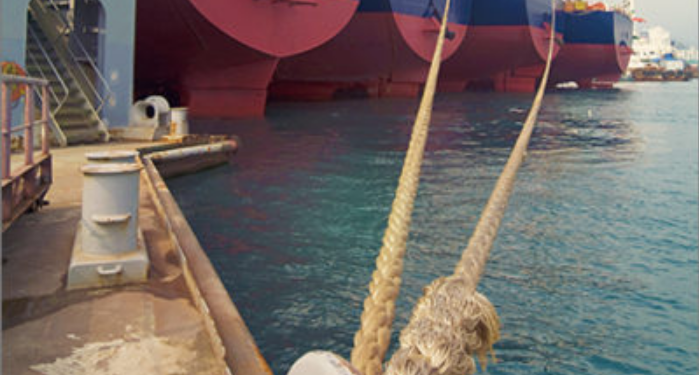Intertanko launched new guidance on Mooring System Management Plans and Line Management Plans. The guidance is developed to assist operators ensure compliance with MEG4 and address the questions in Vessel Inspection Questionnaire (VIQ7).
With this guide, Intertanko aims to help operators manage the relevant equipment and lines from design to retirement. In fact, MEG4 states that the plans must remain on board the ship during its life as part of the management of change records. This ensures that documents and records are not lost, while it is also suggested that all information regarding the mooring of the vessel is considered a complete system.
[smlsubform prepend=”GET THE SAFETY4SEA IN YOUR INBOX!” showname=false emailtxt=”” emailholder=”Enter your email address” showsubmit=true submittxt=”Submit” jsthanks=false thankyou=”Thank you for subscribing to our mailing list”]
The plans should also incorporate a record of any changes that have taken place to the mooring equipment and arrangements since the vessel was built.
Mooring System Management Plan
Intertanko notes that the MSMP should ensure that the mooring system is inspected, maintained and operated according to the original design basis. The information that is included in the MSMP must be available to anyone who needs to review it.
In addition, the MSMP has to be specific for each ship and add to its safety management system. By using a ‘goal-based’ approach, the key elements of the mooring system are identified against which high level ‘goals’ are set out supported by detailed ‘functional requirements’.
What is more, a register of the mooring system components must be kept throughout the ship’s life, in an accompanying Mooring System Management Plan Register.
Specifically, the MSMP should include the following:
- Part A – General ship particulars;
- Part B – Mooring equipment design philosophy;
- Part C – Detailed list of mooring equipment;
- Part D – Inspection, maintenance and retirement strategies;
- Part E – Risk and change management, safety of personnel, and human factors;
- Part F – Records and documentation;
- Part G – Mooring System Management Plan Register (MSMPR).
Line Management Plan
MEG4 also contains a description of the Line Management Plan (LMP), which is specific to an operator, ship type, and trade route. Nonetheless, MEG4 provides general guidance on creating a LMP.
Namely, an must include all the requirements for the way that lines are maintained, inspected and retired and each of these parts should be described in detail in the plan. Moreover, the inspection section should also demonstrate how and when the inspection should take place.
Main components include:
- Records of mooring hours;
- Line inspection records and plans;
- Manufacturer and operator retirement criteria;
- Test/inspection reports;
- Manufacturer’s recommendations following tests or inspections.
According to MEG4, the operator is responsible for ensuring the right development and implementation of the LMP. Similar with the Mooring System Management Plan Register (MSMPR), LMP is a live document and can be held either in hard or soft version.
However, it must be incorporated into the vessel’s document control system and be subject to change management controls to ensure a complete history. It should also be easily accessed for internal and external compliance verification, ship personnel training and communication with manufacturers.







































































